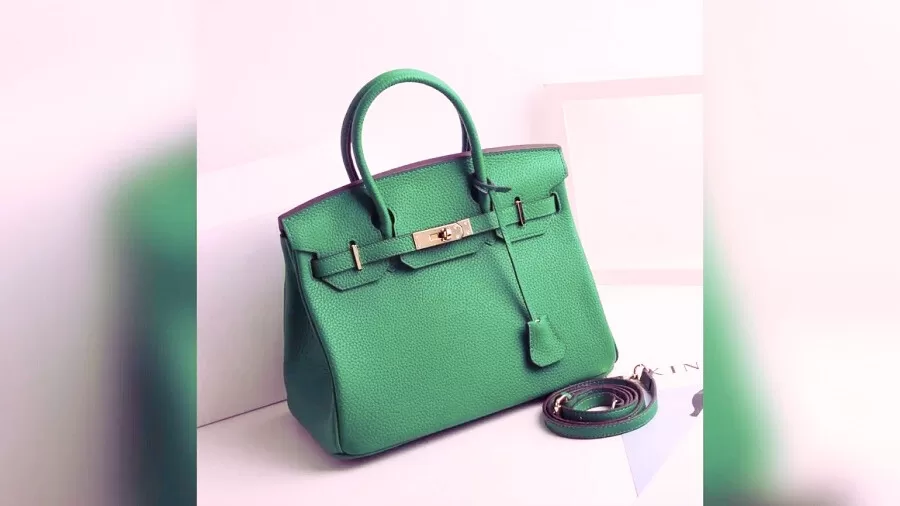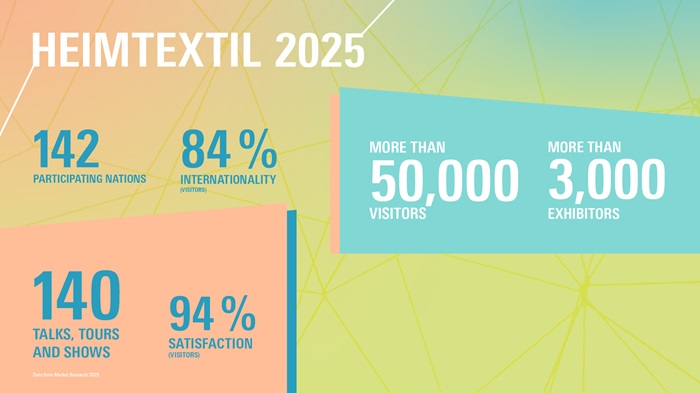FW
As per Bangladesh Knitwear Manufacturers and Exporters Association (BKMEA), though demand for knitwear products made in Bangladesh is on the rise, the segment has failed to get fresh investments in the last three years. The segment is in need of funds to become competitive to be able to cater to the export demand. However, recent incidences of fire and other calamities that brought to light the poor working conditions in factories are also one of the reasons why investors are staying away.
The industry body said that the sector is bogged down with issues like power crisis, labour unrest and a new wage structure, which further is causing a roadblock to fresh investments. According to BKMEA data, over the last three years, fewer than 30 new small-scale factories were established in manufacturing knitwear fabrics. In 2011 there were more than 1,500 factories but now only 800 factories are regular members of the BKMEA. The data also reveals that the sector has not only failed to attract new investments but also many existing owners are shutting down their factories.
The segment is waiting to get impending issues resolved so that investors start looking at it once again. There is also fear of rising unemployment due to shutting down of existing factories. The organization is seeking government assistance to establish a planned industrial estate, which could bring in fresh investments.
www.bkmea.com
 BIFF&BIL 2014, ASEAN's biggest trade forum for fashion and leather products was held from March 12 to 16, 2014 at Challenger Hall 1-2, Impact Muangthong Thani. The fair had an international feel as 700 booths put up by manufacturers.
BIFF&BIL 2014, ASEAN's biggest trade forum for fashion and leather products was held from March 12 to 16, 2014 at Challenger Hall 1-2, Impact Muangthong Thani. The fair had an international feel as 700 booths put up by manufacturers.
Visitor turnout cascade
Thailand’s political unrest took a toll on the number of visitors to the event this time as BIFF & BIL 2014 saw a 15 per cent fall in the number of visitors this year. Yuttna Silpsarnvith from TGMA (Thai Garment Manufacturers Association) revealed that political problems and demonstrations were the main reasons for low turnout. “This is better than what we forecasted at 20 to 30 per cent less,” said Silpsarnvith. In fact, Hong Kong government issued a notification saying it is critical and hence did not want their people to visit the fair. “It was a difficult situation to deal with,” Silpsarnvith pointed out.
Locals were lesser in numbers however, there was an increase in foreign visitors  especially suppliers. Japanese customers came in large numbers and 12 Japanese brands put up booths for the first time. These brands came with an intention to expand to Thailand and Asia so they scored really well. This is the first time they were looking at a change in their consumer bases. “They intend to come back with more than 20 booths next time. Korea has also expressed its desire to increase its presence. This year they had eight booths but next year they will come with more textiles and want to expand here,” added Silpsarnvith.
especially suppliers. Japanese customers came in large numbers and 12 Japanese brands put up booths for the first time. These brands came with an intention to expand to Thailand and Asia so they scored really well. This is the first time they were looking at a change in their consumer bases. “They intend to come back with more than 20 booths next time. Korea has also expressed its desire to increase its presence. This year they had eight booths but next year they will come with more textiles and want to expand here,” added Silpsarnvith.
Emerging talent at BIFF & BIL
Designers’ Room project dominated the event. As a part of this project, new designers showcased their talent. It supports emerging talents whose ambition is to become accomplished fashion designers and build global fashion brands. The project aims at offering a new generation of Thai fashion designers to develop their capabilities and have trade opportunities as well as acquire experience in marketing. Members of Designers’ Room are recognized by their creativity, strong design aesthetic and distinctive character.
AFF promotes Asian lifestyle
The AFF conference was another major highlight of the event where six countries viz. China, Japan, Korea, Singapore, Thailand and Vietnam were invited to hold fashion shows. David Wang, Chairman, Asia Fashion Federation Singapore Committee explains, “The main objective of AFF (Asian Fashion Federation) is to promote Asian style and that is not just fashion but lifestyle. The West has been influencers of fashion for a long time but Asia would be next. And we are trying to make Asia the next powerhouse. This will take time because you can’t change perceptions overnight.” Wang further added, “We feel that even though western fashion is looking to East, they are looking away from traditional fashion sources like New York, Paris, Milan. We are trying to promote Asian styles here.”
AFF started with China, Japan and Korea and Singapore followed by Thailand and Vietnam. Wang says they would like to have India on board as well as it has a rich culture and a variety in textiles. “Indian designers do a fantastic job however, we have had no Indian association or designers approach us as yet. We have designers from Indonesia and Philippines, so we are considering those countries next,” added Wang.
Apart from the annual fashion showcase, AFF also organizes seminars which usually revolve around the fashion industry and latest techniques. It tries to analyze what customers want. The fair also held an ‘Elderly Fashion Exhibition’ featuring clothes, footwear, bags and other products, Hotel Lifestyle Exhibition featuring items such as uniforms, footwear and beddings, and a seminar on 2014-’15 trends for leather products by experts from Italy. Additionally, there was business-matching to help manufacturers discover partners and build networks with potential buyers from ASEAN and other countries. More than 31 companies indicated their readiness to take the ‘Small Lot Orders’ to accommodate buyers making orders with small quantity yet with wide variety of product designs and custom-made quality. Manufacturers participating in this program had booths bearing the ‘SOOK (Small Order OK)’ logo.
Cotton grown in five continents will now be listed on a new futures market as the US loses its central role as a source of the commodity. World cotton futures will be listed on Intercontinental Exchange (ICE), in the second half of 2014. ICE’s existing benchmark cotton futures, which dates back to 1870, is priced exclusively against US-grown crops.
Members of two industry groups, the American Cotton Shippers Association and the Liverpool-based International Cotton Association, have also reached a consensus on the origins and delivery points of the new market. In early 2011, prices reached record above 2 dollars per pound amid a perceived cotton shortage, leading to losses, defaults and lawsuits that continue to have an impact over the industry. ICE May cotton was 91.98 cents/lb early this week.
By accepting delivery of cotton cultivated in more places, traders hope to avoid squeezes and better track prices in the global marketplace. Futures are contracts that require delivery of a commodity by a certain date. Cotton from Australia, Brazil, India, the US and, West Africa, Benin, Burkina Faso, Cameroon, Ivory Coast and Mali will now be eligible for deliveries against the new world contract. All these countries are net cotton exporters.
The new world contract will showcase delivery points in the US, Australia and Malaysia, since it is close to yarn mills in China and Vietnam. The international cotton market is led by commodities trading houses such as Louis Dreyfus Commodities, Cargill, Glencore Xstrata, Noble Group and Olam. ICE will continue to list its benchmark US contract alongside the world contract.
www.theice.com
The lifetime achievement AATTC (Association of Textile, Apparel and Materials Professionals), world’s leading non-profit association serving textile professionals since 1921) Award for outstanding achievement has been bestowed to John Richard ‘Dick’ Aspland in the field of textile chemistry.
Aspland’s research included a wide range of textile chemistry interests, including fluorescence of dyeing and laundered fabrics (bi-spectral-spectrometry) ; fastness properties of dyeing on novel polymers; implementation of novel shade sorting software for colour users from colour instrument manufacturers to apparel cutters; the influence of fibre, yarn and fabric parameters on the physical properties of coated fabrics; synthesis of isotopic tracers for studying diffusion in nylon dyeing; the effect of colour distribution on the colour appearance of yarns, fibres, and fabrics (mirco-spectrometry); and the interactions between pigment particles and polymers.
Aspland has been active in textile chemistry for more than 50 years as a, researcher, and educator in academia and industry. His book ‘Textile Dyeing and Colouration’ published by AATCC in 1997, has been used as a premier literature on dyeing. Aspland and his former student, Ann Laidlaw, together published the AATCC ‘Colour Guidebook’ in 2011. He has published more than 145 articles in journals and in conference proceedings, three peer-reviewed book chapters, and holds two patents.
He is an AATCC member since 1971, and has received the AATCC Harold C. Chapin Award for services to AATCC in 1999. In 2005, he was bestowed with the AATCC William J Weaver Paer of the Year Award for his contributions to textile science literature. He also received the Award for Faculty Excellence in 2000 and 2002 from the Clemson University Board of Trustees. He is also a member of the Inter-Society Colour Council and the Fibre Society.
www.aatcc.org
Garment exporters in Pakistan are opposing the demand by spinners to re-impose 5per cent duty on yarn imports from India. The demand for withdrawal of the duty exemption on India’s yarn was made by Aptma to restrict its imports after New Delhi announced a 4per cent rebate on its exports after the EU granted GSP+ status to Pakistan.
While Aptma is of the opinion that the duty rebate would make Indian yarns much cheaper compared to domestic products, Prgmea on the other hand is in favour of the rebate, since it would assist the export community in increasing exports of quality products to the EU. Aptma argues that Indian textile industry is already enjoying several incentives in the form of low energy prices, almost free credit and export rebates, which are causing dumping of cheap yarn in Pakistan, affecting the domestic production. And to control yarn imports from India, it has demanded re-imposing of five per cent duty to protect the domestic industry.
Prgmea, however, feels that at a time when small garment exporters have been hit hard by abrupt appreciation of the rupee, imposition of duty on Indian yarn would further lead to a rise in domestic prices at the cost of value-added exports. The imposition of duty, will increase domestic yarn prices putting pressure on domestic production cost. And if there are no value added textiles to exports then the GSP+ concessions would not mean anything.
The ministry has called for a meeting with stakeholders belonging to both sides to take a decision on the issue.
www.prgmea.org
The US Federal Trading Commission (FTC) has updated it textile labelling rules on fibre content and country-of-origin disclosures. The new rules implement the Textile Fiber Products Identification Act, which requires that certain textiles sold in the country carry labels showing the generic names and percentages by weight of fibres, along with the manufacturer or marketer name, and the country where the product was processed or manufactured.
The changes will see the incorporation of International Organization for Standardization (ISO) 2076 standard for generic names for manufactured fibres, thus allowing greater harmonisation across the global apparel industry. And hang-tags will be allowed to disclose fibre names and trademarks, and performance information, without the need to disclose the product's full fibre content.
The country-of-origin disclosure clarifies the origin of the country where products were processed or manufactured. A strongly opposed proposal that would have required annual renewal of continuing guaranties, a form completed by sellers to guaranty products are compliant with the law, was not included in the final rule.
According to the American Apparel & Footwear Association (AAFA), which had opposed the proposal, while these guaranties are an important part of the legal process, a requirement for annual renewal would have attracted significant compliance costs on businesses, without increasing the reliability of the guaranties.
www.ftc.gov
Milano Unica, the trade show dedicated to Italian high-end textiles and accessories concluded in China recently. The show showcased the Spring/Summer 2015 collections of Italian textile supply chain. Nearly 124 exhibitors from the Italian textile districts brought the excellence of ‘Made in Italy’ products to China with an increasing number of textile manufacturers specifically dedicated to women’s wear.
The biannual event witnessed over13.3 per cent rise in visitors against March 2013 edition. Compared to the October 2013 edition, which showcased the Fall/Winter 2014-’15 collections, attendance was steady. Organisers say the data confirms the trend of the Chinese market, reflecting increased quality of Chinese apparel production, increasingly oriented towards higher standards in terms of quality, innovation and service.
The response towards women’s wear exhibitors from visitor traffic reflects an increase in interest. Milano Unica China started as an event mainly dedicated to men’s wear, but now it is seeing women’s wear posting significant growth and increasing its market share. The presence of international buyers from other Asian markets, like India, Japan and Australia, in addition to Russia, the US and Scandinavia is also on the rise. The next edition in China is scheduled for October 20 to 23, 2014 at the Shanghai New International Expo Centre.
www.milanounica.it
The International Textile Industry Exhibition Baltic Fashion & Textile Riga 2014 will take place from April 4-6, 2014 at the International Exhibition Center in Kipsala, Riga. For the first time Latvian and Lithuanian organizers of the biggest textile industry exhibitions have joined forces to present the achievements of Baltic textile industry and the competitiveness of its products, and introduce the versatility and high quality of local products.
Professionals would present their products and services, network and look for new contacts and cooperation partners, find out the novelties of industry by attending international conference and workshops and see the latest creations of young fashion designers during the competition ‘Habitus Baltija 2014’ that is organized in the framework of Riga.
The exhibition would display a range of fabrics such as: wool, alpaca, angora, cashmere, cotton, linen, silk, viscose, acetate, polyamide, nylon, polyester, triacetate and mixed fiber fabrics for sewing and manufacturing of men’s, women’s and children’s clothes, knitwear, lingerie, bed-clothes and home textiles, as well as sewing accessories and materials. The exhibitors would be from Germany, Italy, France, Sweden, Belarus, Uzbekistan and Lithuania.
An Innovation Stand is being established by the Latvian Technological Center, the Enterprise Europe Business Network Latvian cooperation with the Latvian Association of Textile and Clothing Industry. This is the place for professionals to meet all parties involved in the textile innovation process, experts of education, research, patenting, incubation and other areas.
www.b2match.eu
Though British retail clothing chain Primark has already spent more than $3 million for short-term assistance to victims of Rana Plaza building tragedy in Bangladesh, the retailer has announced an additional $10 million compensation to the victims. The company would start giving away payments to the 580 victims or their dependents who were working for Primark's supplier New Wave Bottoms.
The payment will be made in cash according to the impact of the injury and level of disability resulting from the collapse or in the case of dependents of those who lost their lives in the tragedy, estimates of lost earnings. All workers and dependents will be paid within 12 months.
Primark also announced a further payment of $1million to workers in its competitors' supply chain. This money will be paid to the Rana Plaza Donors Trust Fund chaired by the International Labour Organisation (ILO) for distribution.
Five global clothing brands and retailers recently raised $40 million for victims of the Rana Plaza factory disaster in Bangladesh. The companies, who have raised funds, include El Corte Inglés; Inditex, which includes the brand Zara; Loblaw; Mango and Mascot. Now labour groups are pressurizing companies like Walmart, Children's Place and Benetton, which were linked to Rana Plaza tragedy.
www.primark.com
After a string of factory tragedies in Bangladesh claimed over 1,000 lives, many global brands sourcing their requirements from the country have put in efforts to improve working conditions in factories. Efforts are also being made to improve and strengthen fire and building safety standards in the apparel industry. As a part of these initiatives, Eric Wiseman, VF Corporation’s Chairman, President and Chief Executive Officer has announced steps that they have taken to make factories safer both as a corporation and as a member of the broader brand and retail initiative the Alliance for Bangladesh Worker Safety. These include a hybrid model that combines VF’s own manufacturing practices with those it requires of its contractors.
VF, Walmart Stores, Target Corp and Gap launched an alliance last July in the wake of Bangladesh factory tragedies. After calamity struck the Asian country, there was a huge hue and cry over reforms required to be put in place in the Bangladeshi apparel sector. So, the global fashion industry along with labour organisations and international NGOs have been working towards implementing new safety plans and reforms to provide a safe work environments.
VF in particular, under the company’s ‘Third Way’ program is currently building a factory in Bangladesh that looks and runs like a VF-owned and -operated factory. The factory currently under construction in Bangladesh, to be operated by The Rising Group, is the first in that country to be built under VF’s program. Though the factory would be run by the Rising Group, it would adhere to VF’s manufacturing expertise.
www.vfc.com











